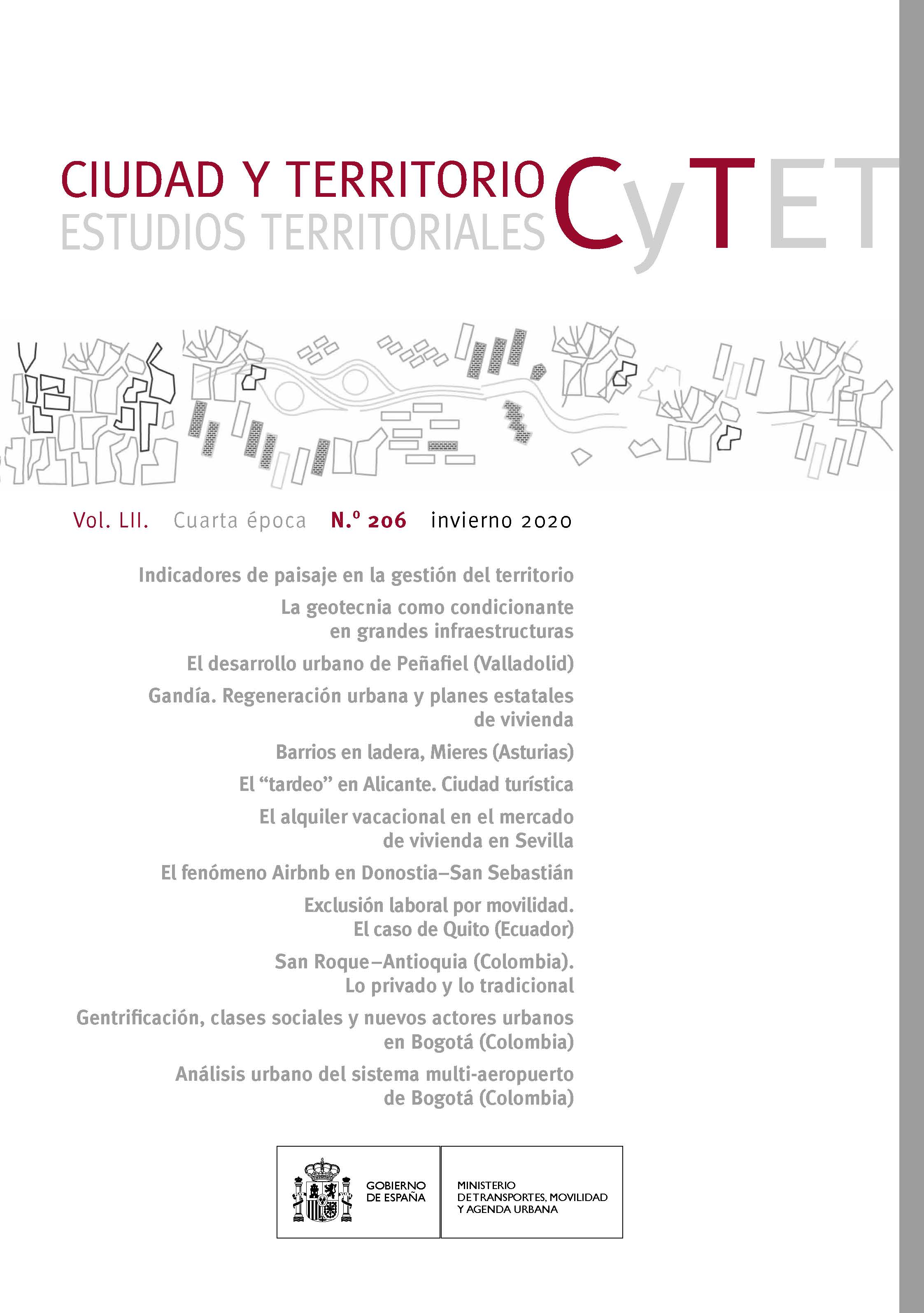Labor exclusion due to mobility: the case of Quito (Ecuador)
DOI:
https://doi.org/10.37230/CyTET.2020.206.09Keywords:
Urban development, Labor exclusion, Mobility, Access to employment, QuitoAbstract
This research analyses whether in the city of Quito mobility is a determining factor in access to employment, which would be conditioning the levels of development achieved. The results of the regression model through Ordinary Least Squares show that mobility is a factor of labor exclusion as it is inversely related to multidimensional poverty in the territory. In addition, the place of residence conditions the opportunities and perpetuates the structures that limit development. Specifically, the results suggest that the distance to the main source of income measured over time and the density of the means of transportation in each parish foster the generation of poverty.
Downloads
Published
How to Cite
Issue
Section
License
Copyright (c) 2020 Susana Herrero-Olarte

This work is licensed under a Creative Commons Attribution-NonCommercial 4.0 International License.
Considering the provisions of the current legislation on Intellectual Property, and in accordance with them, all authors publishing in CyTET give -in a non-exclusive way and without time limit- to the Ministry of Transport, Mobility and Urban Agenda the rights to disseminate, reproduce, communicate and distribute in any current or future format, on paper or electronic, the original or derived version of their work under a Creative Commons Attribution-NonCommercial-NoDerivative 4.0 license International (CC BY-NC-ND 4.0), as well as to include or assign to third parties the inclusion of its content in national and international indexes, repositories and databases, with reference and recognition in any case of its authorship.
In addition, when sending the work, the author(s) declares that it is an original work in which the sources that have been used are recognized, committing to respect the scientific evidence, to no longer modify the original data and to verify or refute its hypothesis. Author(s) also declare that the essential content of the work has not been previously published nor will it be published in any other publication while it is under evaluation by CyTET; and that it has not been simultaneously sent to another journal.
Authors must sign a Transfer of Rights Form, which will be sent to them from the CyTET Secretariat once the article is accepted for publication.
With the aim of promoting the dissemination of knowledge, CyTET joins the Open Journal Access (OA) movement and delivers all of its content to various national and international indexes, repositories and databases under this protocol; therefore, the submission of a work to be published in the journal presupposes the explicit acceptance by the author of this distribution method.
Authors are encouraged to reproduce and host their work published in CyTET in institutional repositories, web pages, etc. with the intention of contributing to the improvement of the transfer of knowledge and the citation of said works.








 Enlace a CyTET en Linkedin
Enlace a CyTET en Linkedin